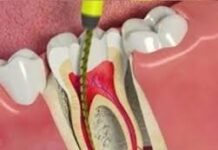From the food industry to pharmaceuticals and drug development, analytical laboratories have witnessed rising demand for accurate estimations of analytes in complex biological matrices. While this itself is a challenging task, the need to analyze thousands of study samples while ensuring reliability and accuracy makes it even more difficult. Liquid chromatography-mass spectrometry (LC-MS) has emerged as a powerful technique to meet these challenging requirements. Due to its efficiency and versatility, LC-MS testing is now one of the most desirable modern analytical tools.
LC-MS sample analysis involves the physical separation of analytes or compounds, followed by the detection based on their mass-to-charge ratio. Although LC-MS services are relatively new, their accuracy, selectivity, and sensitivity have made it a primary detection technique for analytes in the microgram and nanogram quantities. Besides, hyphenated alternatives such as LC-MS/MS analysis make them an exciting service. Hence, bioanalytical laboratories offering ELISA services often focus on LC-MS testing. However, robust LC-MS method development and validation remain critical for reliable and accurate results. The current article discusses the emerging trends in LC-MS services for driving innovations in analytical chemistry.
Trends emerging in LC-MS testing
Recent years have seen an increased demand for separating and analyzing complex and diverse study samples in vaccine development, precision medicine, biomedical research, and large-scale translation experiments. These studies have significantly extended the applications of LC-MS systems. Today, cation exchange, anion exchange, super macroporous and hydrophilic interaction liquid chromatography columns are delivering robust separation of peptides, lipids, intact proteins, oligonucleotides, and glycans. Besides, the focus on complex compounds has resulted in the rapid adoption of mass spectrometry in quality control. Charged aerosol detection in vaccine quality control, various ultra-low nanoflow coupled with HRAM mass spectrometers for single-cell proteomics have further accelerated the use of LC-MS systems in biomedical research and applications.
Today, the trend in LC-MS testing is moving towards more user-friendly data analysis. LC-MS instrument manufacturers are combining automation and simplification with smart instrument characteristics to support preventive maintenance, ease of use, and reduced system downtime, making the tool more accessible to scientists and researchers with less technical expertise in the instrument. Besides, the COVID-19 pandemic made it crucial to work on the possibility of making the instrument remotely controlled so that data can be accessed from anywhere. With an increased awareness of environmental impact and rising energy costs, manufacturers are now considering more eco-friendly and sustainable solutions in all elements of LC-MS method validation and development.
LC-MS testing is unique to everyone. Clinicians use it as a diagnostic tool, pharmaceutical manufacturers will test a drug attribute, whereas researchers will test their hypothesis. Hence, manufacturers are now realizing these individual customer segments and have started offering products and services targeted to their research needs and applications. However, one commonality between all demands and requirements is that all customer segments require a secured operational tool with all data systems.
Conclusion
LC-MS assays are powerful tools for analyzing polar and nonpolar compounds with accuracy and reliability. Besides, emerging trends aligning with customer requirements are driving innovations in LC-MS services.









